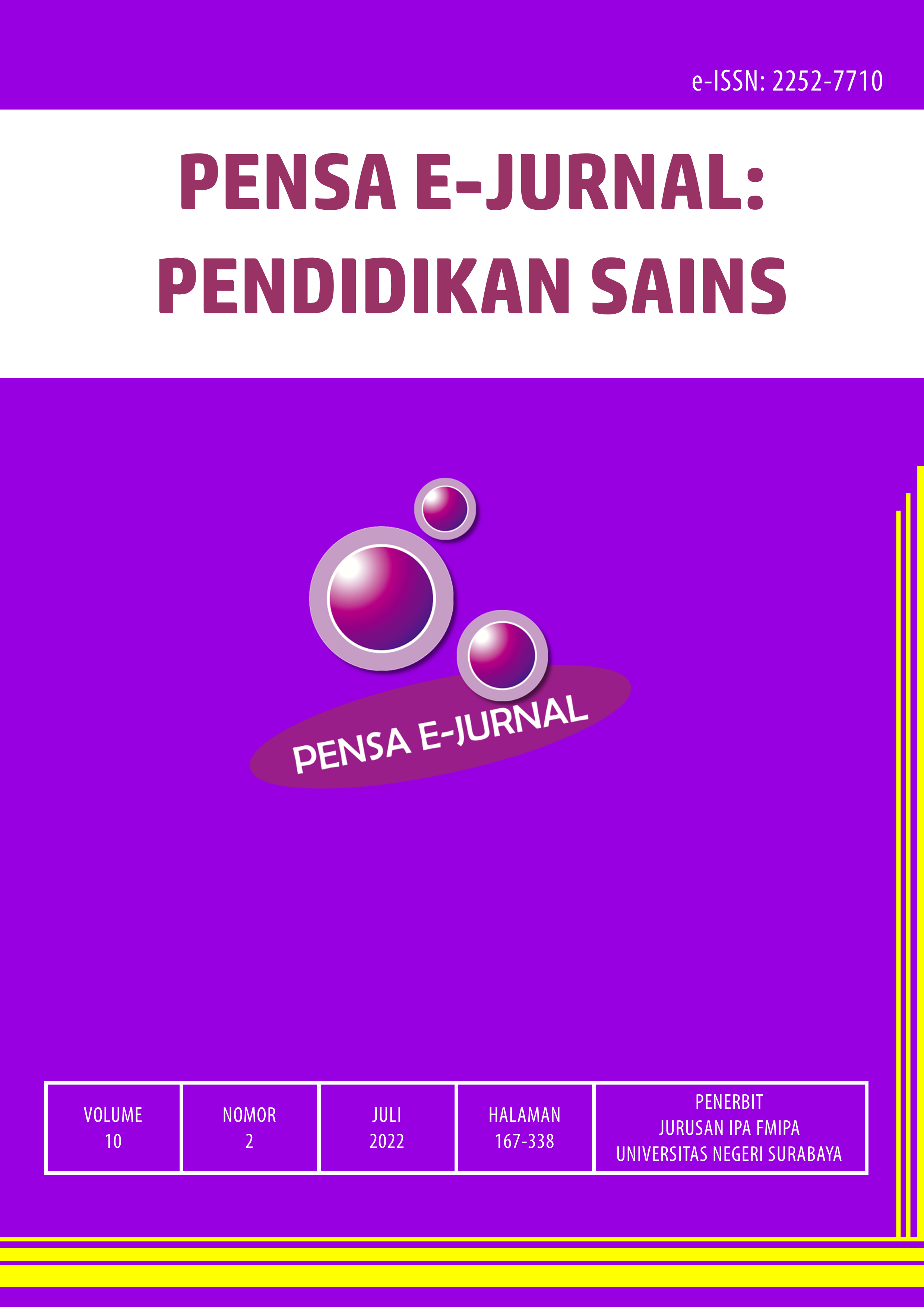MOTIVASI BELAJAR SISWA SMP SELAMA PEMBELAJARAN TATAP MUKA TERBATAS
DOI:
https://doi.org/10.26740/pensa.v10i2.45157Keywords:
Learning motivation, Limited face-to-face learning, ARCS aspectsDownloads
Download data is not yet available.
Downloads
Published
2022-07-31
How to Cite
Yusrin, V. I., & Hidayati, S. N. (2022). MOTIVASI BELAJAR SISWA SMP SELAMA PEMBELAJARAN TATAP MUKA TERBATAS. PENSA E-JURNAL: PENDIDIKAN SAINS, 10(2), 266–272. https://doi.org/10.26740/pensa.v10i2.45157
Issue
Section
Articles
 Abstract views: 486
,
Abstract views: 486
, PDF Downloads: 539
PDF Downloads: 539

















